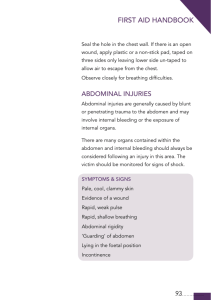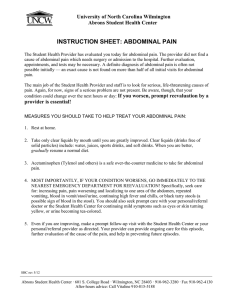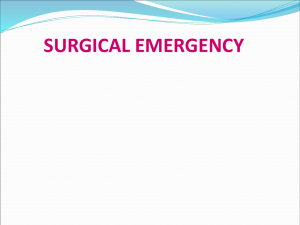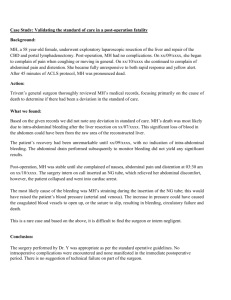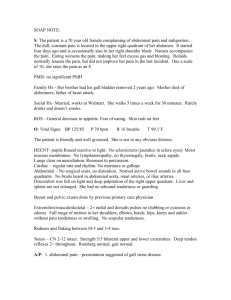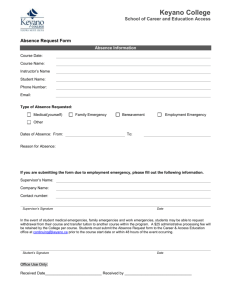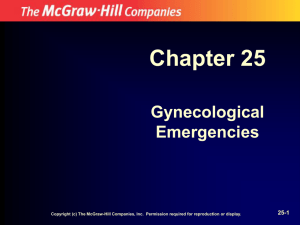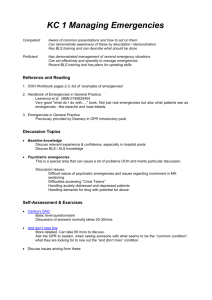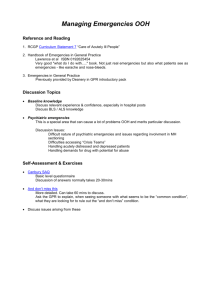Chapter 20: Abdominal and Gastrointestinal Emergencies
advertisement
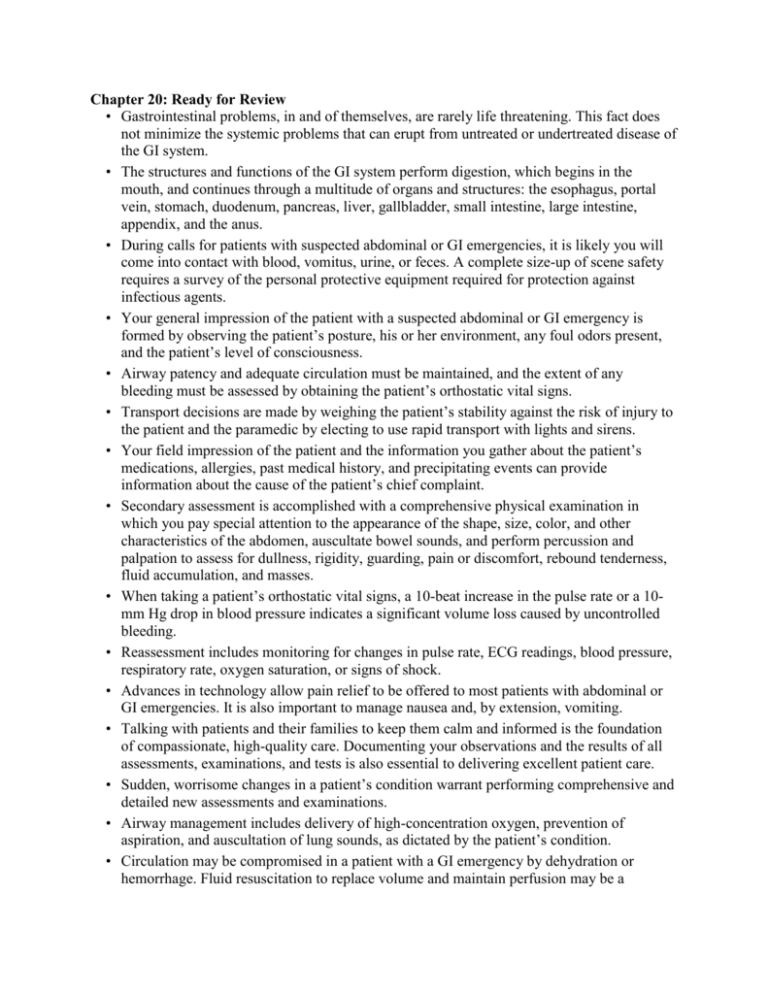
Chapter 20: Ready for Review • Gastrointestinal problems, in and of themselves, are rarely life threatening. This fact does not minimize the systemic problems that can erupt from untreated or undertreated disease of the GI system. • The structures and functions of the GI system perform digestion, which begins in the mouth, and continues through a multitude of organs and structures: the esophagus, portal vein, stomach, duodenum, pancreas, liver, gallbladder, small intestine, large intestine, appendix, and the anus. • During calls for patients with suspected abdominal or GI emergencies, it is likely you will come into contact with blood, vomitus, urine, or feces. A complete size-up of scene safety requires a survey of the personal protective equipment required for protection against infectious agents. • Your general impression of the patient with a suspected abdominal or GI emergency is formed by observing the patient’s posture, his or her environment, any foul odors present, and the patient’s level of consciousness. • Airway patency and adequate circulation must be maintained, and the extent of any bleeding must be assessed by obtaining the patient’s orthostatic vital signs. • Transport decisions are made by weighing the patient’s stability against the risk of injury to the patient and the paramedic by electing to use rapid transport with lights and sirens. • Your field impression of the patient and the information you gather about the patient’s medications, allergies, past medical history, and precipitating events can provide information about the cause of the patient’s chief complaint. • Secondary assessment is accomplished with a comprehensive physical examination in which you pay special attention to the appearance of the shape, size, color, and other characteristics of the abdomen, auscultate bowel sounds, and perform percussion and palpation to assess for dullness, rigidity, guarding, pain or discomfort, rebound tenderness, fluid accumulation, and masses. • When taking a patient’s orthostatic vital signs, a 10-beat increase in the pulse rate or a 10mm Hg drop in blood pressure indicates a significant volume loss caused by uncontrolled bleeding. • Reassessment includes monitoring for changes in pulse rate, ECG readings, blood pressure, respiratory rate, oxygen saturation, or signs of shock. • Advances in technology allow pain relief to be offered to most patients with abdominal or GI emergencies. It is also important to manage nausea and, by extension, vomiting. • Talking with patients and their families to keep them calm and informed is the foundation of compassionate, high-quality care. Documenting your observations and the results of all assessments, examinations, and tests is also essential to delivering excellent patient care. • Sudden, worrisome changes in a patient’s condition warrant performing comprehensive and detailed new assessments and examinations. • Airway management includes delivery of high-concentration oxygen, prevention of aspiration, and auscultation of lung sounds, as dictated by the patient’s condition. • Circulation may be compromised in a patient with a GI emergency by dehydration or hemorrhage. Fluid resuscitation to replace volume and maintain perfusion may be a • • • • • lifesaving intervention. Paramedics must learn about individual GI diseases in order to keep pace with the rising stature of the EMS field and the increasing level of responsibility paramedics must be prepared to assume. Such knowledge is also necessary in order to educate patients about their own or a loved one’s disease. Four major conditions are responsible for abdominal and GI emergencies: – Hypovolemia caused by dehydration or hemorrhage – Acute or chronic inflammation – Infection – Obstruction Bleeding within the GI tract is a symptom of another disease, not a disease itself. Presentation of GI bleeding is variable because it can reflect the presence of a number of diseases. Each of these conditions has its own pattern of disease progression. Pediatric patients face special challenges during abdominal and GI emergencies because of their size and physiology, particularly when a congenital anomaly is present. Comorbidities, multiple medications, and other factors can complicate the care of older adults with abdominal or GI emergencies.
